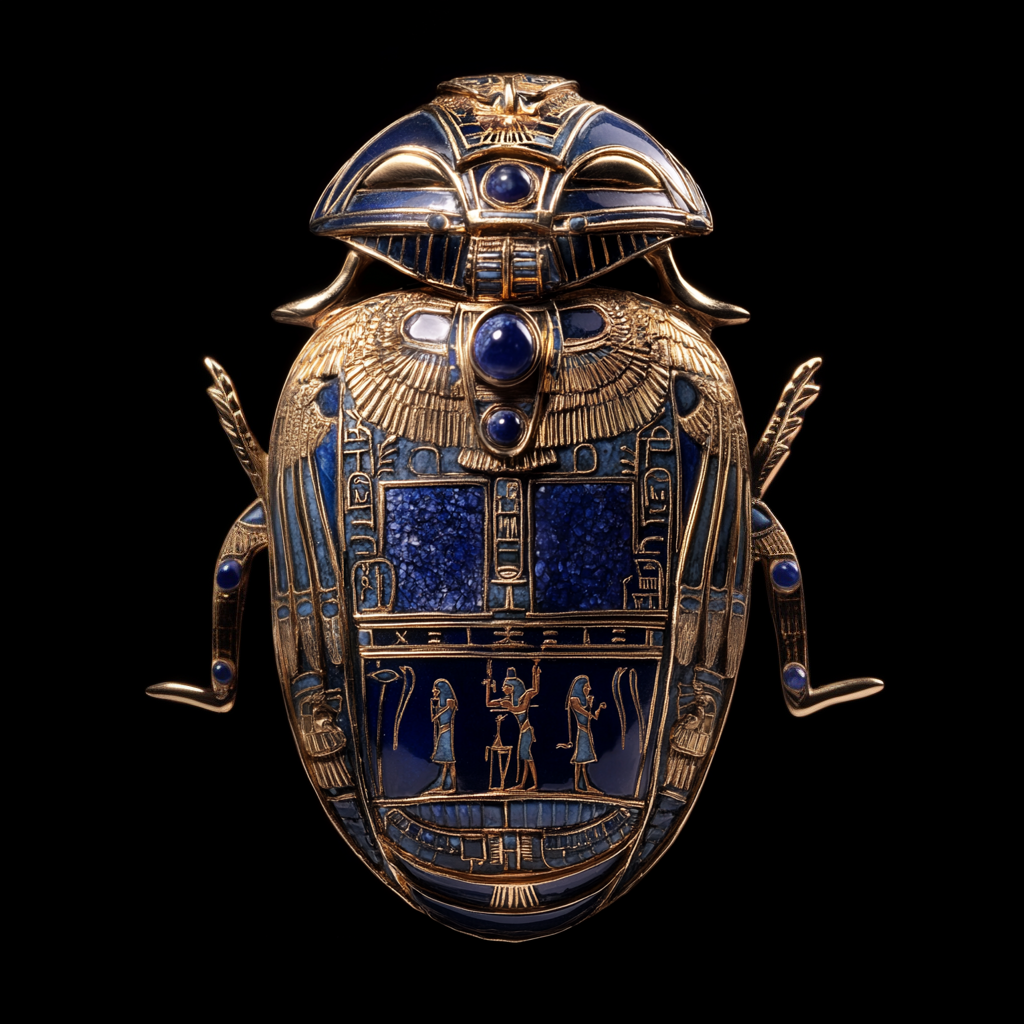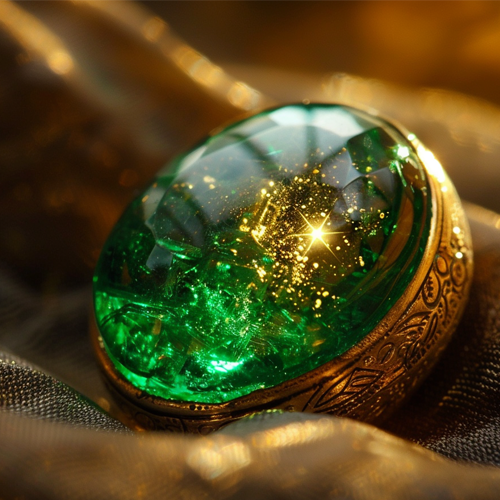The Seven Deaths Scarab is a relic of profound spiritual significance, its history intertwined with the mysteries of the ancient Egyptian afterlife. Believed to have been created during the reign of Pharaoh Seti I, the scarab was not merely a symbol of resurrection and eternity but an essential tool for navigating the perilous Duat—the Egyptian underworld. It was carried by high priests and pharaohs alike as a talisman of protection, guidance, and divine favor.
According to ancient texts, the scarab was imbued with the blessings of Osiris, the god of the underworld and protector of the dead. It was said that the artifact could illuminate the paths of the Duat, revealing hidden dangers and guiding its bearer safely through the seven trials of death. These trials tested the soul’s courage, morality, and purity, as described in the Book of the Dead. Success in these trials was necessary to reach the Field of Reeds, a paradise where the soul could dwell for eternity.
Myths surrounding the scarab speak of its creation by Osiris himself, who forged it from the gold of the Nile and set its wings with sapphires harvested from the stars. The hieroglyphs carved into its body were said to be dictated by Thoth, the god of wisdom and healing, ensuring that the scarab carried the knowledge necessary to overcome the challenges of the afterlife. Legends recount that only those who passed through the trials with the scarab in hand could truly be considered worthy of eternal life.
The artifact’s history is shrouded in intrigue. It was first discovered in the 19th century within the tomb of an unknown high priest in Abydos, a city considered the gateway to the underworld. The expedition’s leaders, Dr. Leif Erickson and Dr. Talula Erickson, embarked on an ambitious archaeological dig and claimed that the scarab glowed faintly in the dark, casting eerie shadows on the tomb’s walls. The discovery was hailed as a triumph, but tragedy soon followed. Members of the expedition began to experience vivid nightmares, and some disappeared under mysterious circumstances. Local villagers whispered that the scarab’s power was not meant to be disturbed.
Despite its ominous reputation, the Seven Deaths Scarab remains a source of fascination for historians and adventurers. Some believe that it holds the key to unlocking lost chapters of the Book of the Dead, while others are convinced it can still guide a worthy soul through the trials of the Duat. Modern accounts of the artifact often describe an unshakable sense of being watched when in its presence, as if the gods themselves are observing.
The scarab’s allure lies not only in its craftsmanship but in the mysteries it represents. It stands as a testament to the ancient Egyptians’ deep understanding of life, death, and the eternal journey of the soul. While many have sought its secrets, few have dared to wield its power, leaving the scarab an enduring enigma in the annals of history.



